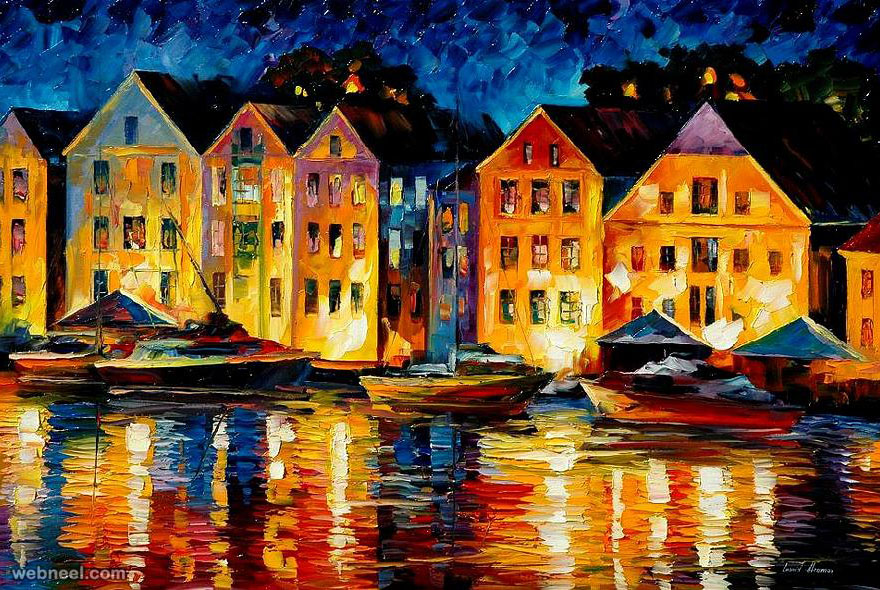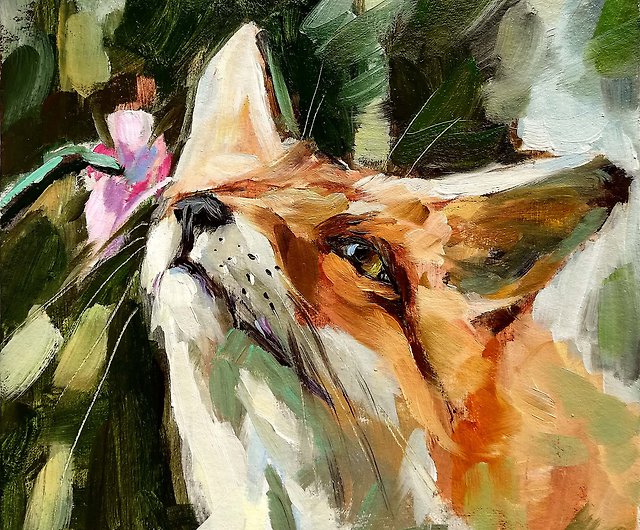Oil Paintings for Sale to Elevate Any Room
Oil Paintings for Sale to Elevate Any Room
Blog Article
Checking out All About Oil Paintings: An Overview to Understanding Their Appeal and Worth
Oil paints have actually astounded audiences for centuries, supplying a glance right into the artistic proficiency of various eras. Their rich history is intertwined with ingenious strategies and extensive emotional expression. Comprehending the products and techniques behind these art work can enhance gratitude. In addition, the market for oil paintings offers opportunities for financiers and collection agencies alike. As one explores this interesting globe, the question arises: what makes an oil paint really important?
The Background of Oil Painting: A Journey Via Time
Although oil paint has roots that go back to ancient times, it truly prospered throughout the Renaissance, when artists uncovered its convenience and abundant shade potential. Early instances can be mapped to the 7th century, with methods advancing significantly across societies. The medium came to be prominent in Northern Europe in the 15th century, particularly with the works of musicians like Jan van Eyck, that pioneered its usage for comprehensive realistic look and vibrant colors. This duration marked a separation from tempera paints, permitting for higher deepness and structure. As oil paint spread, it affected numerous musicians, causing masterpieces by distinguished numbers such as Leonardo da Vinci and Rembrandt. The medium's heritage proceeds, shaping the art world well right into modern-day times.
Understanding Oil Paints: Products and Techniques
As artists discover the globe of oil paints, they experience a diverse selection of materials and techniques that specify this tool. The primary parts of oil paint include pigments, which give shade, and drying oils, such as linseed, that bind the pigments and assist in application. Numerous ingredients can modify the paint's texture and drying time, boosting convenience. Techniques like glazing, where transparent layers are accumulated, and impasto, which includes using thick paint, enable various aesthetic results. Additionally, the use of brushes, scheme knives, and even fingers can create special appearances and coatings. Recognizing these strategies and products makes it possible for musicians to totally share their creativity and achieve the preferred impact in their artwork.
The Duty of Shade in Oil Paintings
Shade plays a pivotal duty in oil paints, influencing both visual charm and emotional resonance. Recognizing shade theory fundamentals, including the partnerships in between shades, can improve an artist's ability to share state of mind and environment. Additionally, understanding shade mixing strategies enables higher deepness and splendor in a paint's combination.

Shade Concept Essential
Recognizing shade concept is important for artists working with oil paints, as it forms the foundation for creating aesthetically interesting and harmonious compositions. Shade concept includes the study of just how colors interact, the shade wheel, and the connections between key, second, and tertiary colors. Musicians make use of complementary shades to improve contrasts and create prime focus, while comparable colors promote unity and cohesiveness within an item. Additionally, the principles of cozy and trendy shades influence the assumption of deepness and space in a paint. Realizing these principles allows artists to adjust color effectively, guiding the visitor's eye and interacting their desired message. Proficiency of color concept eventually enhances a musician's capability to communicate emotions and concepts with their work.
Emotional Influence of Color
The emotional influence of color in oil paintings plays an essential role in exactly how visitors view and attach with art work. Colors evoke details sensations and state of minds, affecting the visitor's mood. As an example, cozy shades like reds and oranges can create a feeling of heat and power, while amazing tones such as blues and greens typically stimulate calmness or self-questioning. Artists strategically choose color palettes to improve narrative aspects, leading the target market's psychological journey. The saturation and contrast of colors additionally magnify these results, attracting interest and developing emphasis. Ultimately, the interplay of shades in oil paints not only boosts their visual appeal but likewise functions as an effective tool for psychological expression, enriching the audience's experience and interpretation.
Color Mixing Techniques
While numerous elements of oil painting add to the total composition, grasping shade mixing techniques is crucial for accomplishing wanted results and deepness. Color mixing can be approached via numerous techniques, including the additive and subtractive processes. Additive blending includes combining colors of light, while subtractive blending relies upon pigments, where shades blend to create brand-new shades. Musicians frequently utilize a restricted combination to produce harmonious works, understanding the connections between primary, secondary, and tertiary colors. Strategies such as glazing and scumbling better here boost deepness and brightness. By skillfully blending shades, a musician can evoke feelings, develop prime focus, and accomplish a sense of realism, inevitably boosting the paint's visual and psychological impact.
Famous Oil Painters and Their Iconic Functions

Famed for their mastery of color and method, oil painters have actually created some of the most popular artworks in history. Distinguished musicians like Vincent van Gogh mesmerized target markets with his emotive brushwork in "Starry Night," while Claude Monet's "Impression, Dawn" prepared for Impressionism. Leonardo da Vinci's "Mona Lisa" continues to be an enduring sign of imaginative brilliant, showcasing his skill in capturing human expression. Rembrandt's "The Night Watch" illustrates his cutting-edge use of light and darkness. Other significant numbers include Pablo Picasso, that changed contemporary art with his vibrant trial and error in jobs like "Les Demoiselles d'Avignon," and Georgia O'Keeffe, whose vibrant depictions of landscapes and flowers assisted specify American innovation. Each musician's one-of-a-kind design added substantially to the oil paint landscape.
Just how to Examine the Top Quality of an Oil Paint
Reviewing the top quality of an oil painting involves a careful analysis of workmanship methods, as well as an evaluation of shade and structure. Observing brushwork, layering, and the application of paint can disclose the musician's skill degree. Furthermore, the interplay of shades and the general plan of elements add significantly to the painting's visual worth.
Assessing Craftsmanship Methods
A precise assessment of craftsmanship methods is vital for identifying the quality of an oil paint. Evaluators need to first examine the application of paint; thick, textured brushstrokes might suggest an experienced hand, while extremely uniform applications can indicate an absence of depth. oil paintings for sale. The layering strategy is also essential; the existence of lusters and varied density can enhance brightness and intricacy. Furthermore, the top quality of the products used, such as the canvas and pigments, plays a considerable role in toughness and general aesthetic. Focus to detail in aspects like sides and shifts between shades reflects the musician's dedication to their craft. Eventually, these strategies add to the paint's emotional effect and market price, functioning as indications of the musician's skill and intent
Assessing Shade and Composition
While examining the top quality of an oil painting, one should concentrate on the interaction of shade and composition, as these elements are essential to the art work's total impact. Color options can develop and evoke emotions mood; as a result, the musician's palette need to be checked out for harmony and contrast. A healthy composition guides the audience's eye and develops a feeling of unity. Artists often utilize methods like the regulation of thirds or leading lines to boost aesthetic interest. Furthermore, making use of light and darkness can include depth, enhancing the three-dimensionality of the painting. Ultimately, a successful oil painting marries color and make-up, involving the viewer and welcoming a much deeper appreciation of the musician's vision and method.
Taking care of and Preserving Oil Paintings
Appropriate treatment and preservation of oil paints is important for keeping their integrity and durability. To protect these art work, it is essential to display them away from straight sunshine, which can create fading and staining. Preserving a steady setting with controlled temperature level and moisture additional aids in preventing damages. Cleansing must be done gently utilizing a soft, dry cloth, avoiding any kind of extreme chemicals that could hurt the paint or varnish. Regular examinations for indications of wear and tear, such as flaking or cracking, are suggested. When transferring or keeping oil paintings, proper padding and framing are necessary to prevent physical damage. Eventually, diligent care adds to the visual allure and value of oil paints with time.
The Marketplace for Oil Paints: Spending and collecting
Comprehending the marketplace dynamics for oil paints is important for financiers and collection agencies alike. The worth of these art work is affected by different variables, consisting of the musician's track record, historic significance, and current trends. Collectors typically look for items that reverberate personally while thinking about potential recognition in worth. Auctions and galleries act as main locations for buying and selling, with rates rising and fall based on need and rarity. Investing in oil paintings needs study right into the market, as well as an understanding of authenticity and provenance. Furthermore, emerging artists may use possibilities for significant returns, while developed names can regulate high prices. Overall, a calculated approach to collecting can generate both visual satisfaction and economic rewards.

Regularly Asked Concerns
What Are the Environmental Effects of Oil Painting Products?
The environmental impacts of oil paint products consist of the release of unpredictable natural substances (VOCs), dangerous waste generation, and source extraction for pigments. These factors add to air pollution and environmental destruction, increasing problems among environmentally mindful artists and customers.
Just How Do Various Canvases Affect Oil Painting Outcomes?
Various canvases affect oil paint results substantially. Absorbency, surface, and structure top quality can modify paint application, drying times, and color vibrancy. Musicians usually choose specific canvases to accomplish wanted impacts and improve their imaginative expression.
Can Oil Paintings Be Restored if Harmed?
Oil paints can without a doubt be brought back if harmed. Professional conservators use numerous methods to repair tears, clean surface areas, and address discoloration, ensuring that the art work maintains its original appeal and worth for future generations.
What Are the Signs of an Initial Oil Paint?
The indications of an original oil painting consist of noticeable brush strokes, texture variations, and an uneven canvas weave (oil paintings for sale). In addition, authenticity might be validated with provenance, signatures, and the existence of a varnish layer unique to oil tools
Just How Has Technology Influenced Modern Oil Paint Techniques?
Technology has considerably influenced modern oil painting strategies by presenting electronic tools for preparation, enhanced products for structure and long life, and on the internet platforms for sharing and offering art, consequently expanding musicians' imaginative opportunities and target market reach. Oil paint has roots that date back to ancient times, it genuinely flourished during the Renaissance, when musicians found its adaptability and rich color capacity. The psychological impact of color in oil paints plays an important duty in exactly how viewers connect and regard with art work. While several aspects of oil painting add to the general make-up, grasping color mixing strategies is vital for attaining preferred impacts and depth. Examining the high quality of an oil painting entails a mindful analysis of craftsmanship strategies, as well as an evaluation of shade and composition. While reviewing the top quality of an oil paint, one must concentrate on the interplay of color and structure, as these components are essential to the artwork's general effect.
Report this page